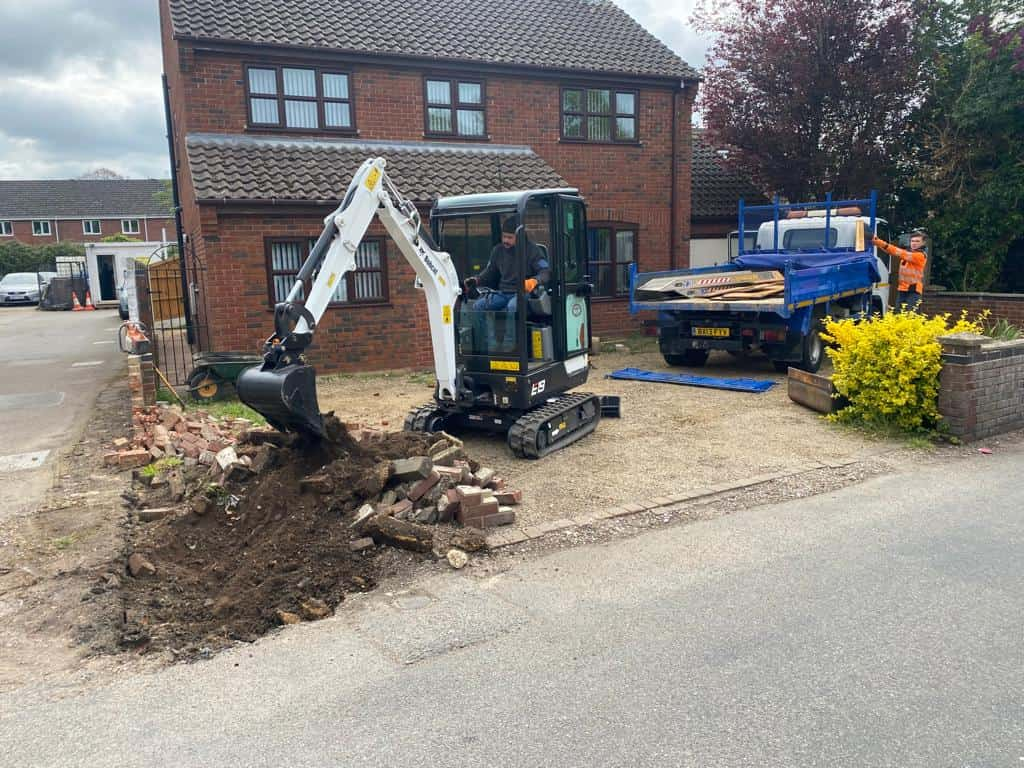The Simple Maintenance Routine That Keeps Block Paving Looking New
Introduction
Block paving is a popular choice for driveways, patios, and pathways due to its durability, versatility, and visual appeal. However, like any outdoor surface, it requires regular maintenance to prevent issues such as weed growth, discolouration, and surface wear. A well-maintained block paving driveway not only enhances a property’s kerb appeal but also extends its lifespan, ensuring it remains in top condition for years to come.
For homeowners in Cranfield, Bedfordshire, following a simple but effective maintenance routine can keep block paving looking as good as new. Cranfield Driveways & Patios provides expert installation and maintenance services, helping homeowners protect their investment with professional care.
Key Takeaways
- Regular sweeping and washing prevent dirt build-up and staining.
- Applying weed control measures helps maintain a neat and tidy appearance.
- Re-sanding the joints keeps block paving stable and reduces movement.
- Sealing the surface enhances colour, protects against stains, and extends longevity.
- Cranfield Driveways & Patios offers expert block paving maintenance in Cranfield, Bedfordshire.
Essential Block Paving Maintenance Steps
1. Regular Sweeping and Cleaning
Dirt, debris, and fallen leaves can accumulate on block paving, leading to surface staining and weed growth. A simple routine of regular sweeping helps prevent these issues and keeps the driveway looking fresh.
For a deeper clean, a mild detergent mixed with warm water can be used to scrub the surface. Alternatively, a pressure washer can be effective, but care should be taken to avoid damaging the sand joints. Using a fan-shaped spray rather than a direct jet prevents displacing the jointing sand.
2. Preventing and Removing Weeds
Weeds and moss are common issues with block paving, as they can grow between the joints and create an untidy appearance. To keep block paving weed-free:
- Regularly brush the surface to prevent seeds from settling.
- Apply a weed killer designed for hard surfaces to control growth.
- Remove any moss using a stiff brush and a diluted vinegar or bleach solution.
Prompt action prevents weeds from taking root and causing long-term damage to the paving.
3. Re-Sanding the Joints
The sand between block paving joints plays a vital role in maintaining structural stability. Over time, rain, wind, and cleaning can displace the sand, leading to movement and gaps. Re-sanding helps keep the paving secure and prevents weed growth.
To re-sand block paving:
- Ensure the surface is dry and clean before starting.
- Use kiln-dried sand, which is designed to fill the gaps effectively.
- Sweep the sand into the joints, ensuring even coverage.
- Lightly compact the surface by walking over it or using a plate compactor.
This simple step helps maintain the integrity of the paving, preventing shifting and uneven surfaces.
4. Applying a Protective Sealant
Sealing block paving provides a protective barrier that enhances durability and reduces maintenance requirements. A high-quality sealant offers several benefits:
- Prevents stains from oil, grease, and dirt.
- Enhances the natural colour of the paving, keeping it looking fresh.
- Reduces water penetration, preventing moss and algae growth.
- Strengthens the sand joints, reducing the risk of displacement.
For best results, a sealant should be applied every two to three years. It is essential to choose the correct type of sealant based on the paving material and finish.
5. Addressing Stains Promptly
Oil spills, tyre marks, and other stains can affect the appearance of block paving. Dealing with stains quickly prevents long-term discolouration. The best approach depends on the type of stain:
- Oil stains – Use an oil remover or degreaser designed for driveways. Avoid using too much water, as it can spread the stain.
- Rust stains – A mild acid-based cleaner can help break down rust marks.
- Tyre marks – Warm soapy water and scrubbing with a stiff brush usually remove these.
Avoid using harsh chemicals or wire brushes, as they can damage the paving surface.
How Often Should Block Paving Be Maintained?
The frequency of maintenance depends on the usage and location of the driveway. As a general guideline:
- Sweeping and light cleaning – Weekly or fortnightly.
- Deep cleaning and weed control – Every 3 to 6 months.
- Re-sanding – Annually or after pressure washing.
- Sealing – Every 2 to 3 years.
Regular upkeep ensures the paving remains attractive and prevents costly repairs in the long run.
Why Professional Maintenance is a Smart Choice
While basic cleaning and maintenance can be done by homeowners, professional services offer additional benefits:
- Deep cleaning with industrial-grade equipment – More effective than standard pressure washing.
- Expert re-sanding and sealing – Ensures proper application for long-lasting results.
- Inspection for damage – Identifies early signs of wear, cracks, or movement.
For homeowners in Cranfield, Bedfordshire, Cranfield Driveways & Patios provides expert block paving maintenance services, ensuring driveways stay in pristine condition.
Conclusion
Block paving is a durable and visually appealing driveway option, but regular maintenance is essential to preserve its condition. By following a simple routine of sweeping, weeding, re-sanding, and sealing, homeowners can keep their driveways looking new for years. Addressing stains promptly and scheduling professional maintenance when needed further enhances the longevity and appearance of the surface.
For expert block paving maintenance in Cranfield, Bedfordshire, Cranfield Driveways & Patios offers high-quality services tailored to your needs. Contact us today to keep your driveway in perfect condition all year round.
Call us on: 01234 639 390
Click here to find out more about Cranfield Driveways & Patios
Click here to complete our contact form and see how we can help with your Driveway needs.

